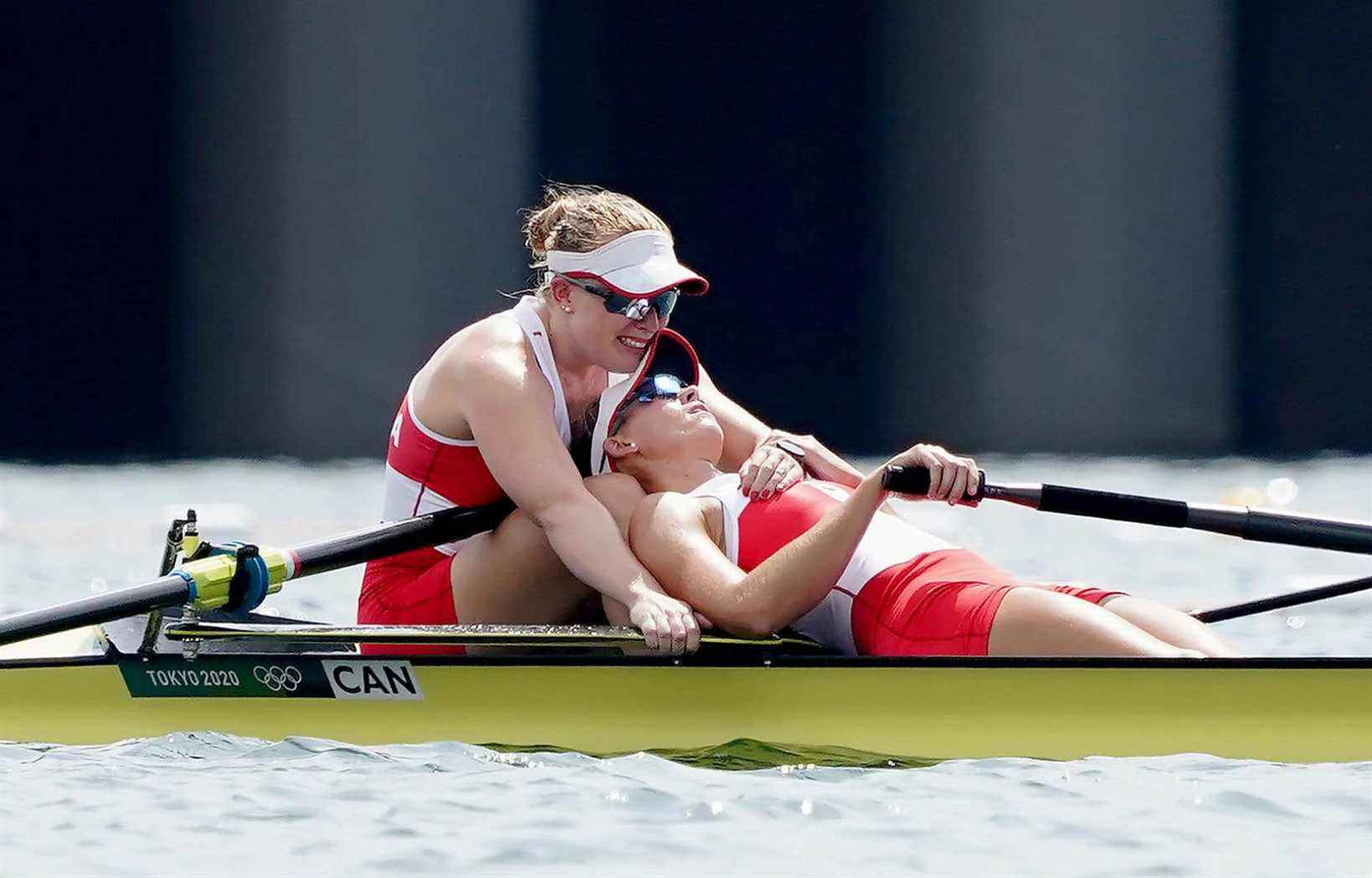Hundreds of Canadian athletes, active and retired, are quick to describe the ways high performance sport has let them down.
Whether at Gymnastics Canada, Bobsleigh Canada Skeleton, Rugby Canada, Rowing Canada or even Artistic Swimming Canada, athletes have demanded many changes over the past few months, from coaches to senior management, and asked for better management of complaints of harassment or intimidation, and the elimination of opaque selection procedures.
The increase in cases raised by athletes recently led the federal Minister of Sports, Pascale St-Onge, to urgently create a consultation table and to invest $16 million from the federal budget for a safe sports environment.
Since M.me St-Onge was appointed to the position in October, she says she has heard of cases of mistreatment, sexual abuse or misuse of funds in at least eight national sports organizations. Mme St-Onge, who called the situation a crisis, expects there to be more cases.
A questioned organization
Canada has won a large number of medals at the last Summer and Winter Games. To hear the recent complaints from athletes, one wonders what the price has been. What is the cause of this erosion of the confidence of athletes in the leaders of federations?
“Athletes will tell you all the time that they don’t play their sport just for them or their coaches. They also do it for the financing of their sport, for its future, explains the professor emeritus in sport and public policies of the University of Toronto Bruce Kidd. It is a heavy burden. »
Some point to Own the Podium (ANP), established in 2005 after Vancouver and Whistler won the 2010 Winter Olympics with the clear goal of getting more Canadian athletes on the the podium.
ANP makes funding recommendations based on medal potential in addition to providing technical expertise to national sports federations.
The organization currently places some $70 million of Canada’s high performance envelope of more than $200 million with sport federations that have athletes who can reach the podium at the Olympic Games, Paralympics and various World Championships. These sums are used to pay training and competition costs.
ANP’s recommendations must be approved by the federal government, but athletes’ perception is that ANP has some power over decisions made by federations.
“ANP’s mandate is to help those athletes and coaches who want to excel on the world stage,” defended ANP’s President and CEO, Anne Merklinger. The federations lead their high performance program. These programs do not belong to ANP. »
She added that “every athlete in this country should have the opportunity to train and perform at the level they desire, in a healthy and safe environment.”
But these athletes find that the methods advocated by the coaches are not questioned when they win.
“I’ve seen everything from psychological abuse, humiliation, extremely harsh criticism, to the point of destroying the self-confidence of these athletes,” said Carla Edwards, a sports psychiatrist who works as a counselor at the mental health with top athletes.
“They were literally told, ‘You don’t know anything, you’re nothing.’ I think the athletes in Canada have had enough. »
Unhealthy culture
Fear of losing funding can foster an organizational culture where problems go unreported or are subject to blindness. Others provide quick fixes that don’t touch the heart of the problem, adds Mr.me Edwards.
“Olympic coaches told me that mental health is shit, that there was nothing I could tell them that could change their minds,” she adds. These behaviors are permitted and tolerated. […] It’s the old way. »
Funding for high performance in the country has been tied to results for a long time. This win-at-all-costs mentality led to Ben Johnson being stripped of his 100m gold medal from the 1988 Games for doping, which led to the Dubin Commission on Doping.
“When these public hearings took place, the athletes all testified to the same thing: the enormous pressure from Sport Canada – to win or not to receive funding – made possible this culture where doping was encouraged or where those in charge closed their eyes,” recalls Kidd.
They were literally told: “You know nothing, you are nothing”. I think the athletes in Canada have had enough.
Alpine skier Allison Forsyth recalls her sleep-depriving anxiety attacks at the Salt Lake City Games in 2002, after it was made clear to her that her federation would be starved of funds if she did not win a medal.
“The fact that a person like me, ranked third in the world, didn’t care about winning the Olympics for her, but because of the funding associated with this victory, is ridiculous,” she says. Own the Podium only made things worse. »
Forsyth found herself at the heart of one of the biggest abuse cases in Canadian sport, when she agreed to be identified as one of coach Bertrand Charest’s alleged victims. Although Charest was found not guilty of the sex crimes charges against her because they took place outside of Canada, he was found guilty of numerous sex crimes against some of his teammates, who were teenagers at the time of the events, in the 1990s.
She is now working to implement safe sports environments, but she is desperate for the lack of commitment from sports federations to be responsible for the mental health of their athletes.
Forsyth points out that federations have been slow to adopt mandatory harassment training for athletes, coaches, parents, officials and administrators, adherence to a universal code of conduct, as well as the establishment of an independent committee for the study of complaints, all solutions put forward by the former Minister of Sports, Kirsty Duncan, in 2019.
Adopting these measures is no guarantee that unhealthy cultures within some federations will be curbed, she warns. “Policies don’t prevent abuse, and complying with those policies doesn’t mean a change has been made,” notes Forsyth. We cannot live in a black or white world when safe sport is in a gray area. »
